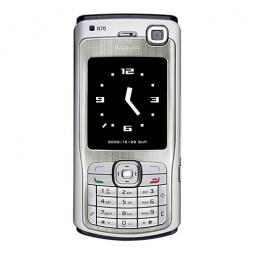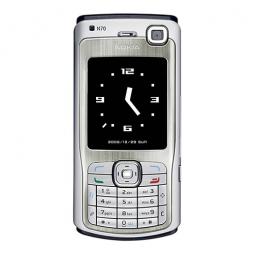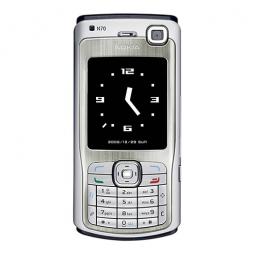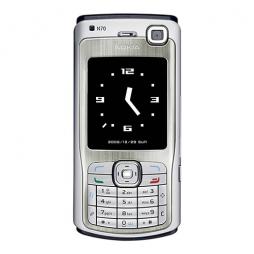Payments and Banking
Posted by MohiniBhavsar on Sep 02, 2010
Mobile Payments Go Viral: M‐PESA in Kenya data sheet 2198 Views
Author:
Ignacio Mas and Dan Radcliffe
Abstract:
M‐PESA is a small‐value electronic payment and store of value system that is accessible from ordinary mobile phones. It has seen exceptional growth since its introduction by mobile phone operator Safaricom in Kenya in March 2007: it has already been adopted by 9 million customers (corresponding to 40% of Kenya’s adult population) and processes more transactions domestically than Western Union does globally. M‐PESA’s market success can be interpreted as the interplay of three sets of factors: (i) pre‐existing country conditions that made Kenya a conducive environment for a successful mobile money deployment; (ii) a clever service design that facilitated rapid adoption and early capturing of network effects; and (iii) a business execution strategy that helped M‐PESA rapidly reach a critical mass of customers, thereby avoiding the adverse chicken‐and‐egg (two‐sided market) problems that afflict new payment systems.
Posted by MohiniBhavsar on Sep 02, 2010
Community-Level Economic Effects of M-PESA in Kenya: Initial Findings data sheet 2588 Views
Author:
Megan G. Plyler, Sherri Haas, and Geetha Nagarajan
Abstract:
M-PESA an agent-assisted, mobile phone-based, person-to-person payment and money transfer system, was launched in Kenya on March 6, 2007. This study is the first of its kind to explore the economic effects of M-PESA in Kenya at the community level.
The findings from the first stage of the study indicate that M-PESA affects the economic outcomes of community members, both users and non-users of M-PESA, through direct and externality effects, and identify 11 economic effects within the broad categories of local economic expansion, security, capital accumulation and business environment after 2.5 years of M-PESA’s use in these communities. The research also shows that effects were not visible in all the study communities and among all the population segments within the communities; they tended to be influenced by gender and geographic location of the communities.
Also, the effects were not always perceived as mutually exclusive, but as interwoven with each other to produce overall community effects.
Posted by AnneryanHeatwole on Aug 30, 2010
The Mobile Minute is back with the latest mobile news. What's happening today? FrontlineSMS now supports MMS via email and offers scheduling features, an infographic breaks down the overlap between social networks and mobile phones, non-profits are ramping up their use of mobile giving campaigns, and Google introduces a new computer-to-phone voice service.
Posted by AnneryanHeatwole on Aug 17, 2010
The Mobile Minute is back with a video explaining the M-PESA mobile money service, news about maternal health insurance via mobiles, an app that helps users determine if a hybrid or plug-in car will be useful to their lives, a report on why you might want to turn off the geo-tagging system on your mobile, and FailFaire in The New York Times.
Posted by AnneryanHeatwole on Aug 13, 2010
Today's Mobile Minute features links on fundraising with QR codes, a survey report on how audiences get information, a breakdown of how journalism is changing due to mobile phones, the announcement of a clearer definition of mobile broadband, an open-source, solar-powered mobile network, and five cross-platform mobile development tools.
Posted by AnneryanHeatwole on Aug 12, 2010
Today's Mobile Minute covers the unfolding BBM security controversy, Ushahidi's new Crowdmap online platform, a roundup of mobile apps for the disabled, a break down of what mobile ownership numbers actually mean, and the take-away on mobile remittances from the Tech@State conference.
Posted by AnneryanHeatwole on Aug 11, 2010
Today's Mobile Minute brings you coverage about contactless mobile payments in the U.S., a report on trends in technology and health, research that covers how mobiles can help economic development in Africa and the challenges that are hindering that development, a data gathering platform from Nokia that is now open-source, and the announcement of the mHealth Summit's keynote speaker.
Posted by MohiniBhavsar on Aug 10, 2010
Banking the Poor via G2P Payments data sheet 2726 Views
Author:
Mark Pickens, David Porteous, Sarah Rotman
Abstract:
Governments make regular payments to at least 170 million poor people worldwide—far more
than the 99 million or so who have active microloans. In this Focus Note, we look at government-to-person (G2P) payments, which include social transfers as well as wage and pension payments. With appropriate experimentation, these payments have the potential to become a vehicle for extending financial inclusion and improving the welfare of poor people. Yet in most countries, far fewer than one-quarter of G2P payments to the poor land in a financially inclusive account—i.e., one that enables recipients to store G2P payments and other funds until they wish to access them and make or receive payments from other people in the financial system, and one that is accessible, in terms of cost and distance.
The first section of this Focus Note reviews the state of G2P payments today, including how we arrived at a figure of at least 170 million poor G2P recipients and a country example (Colombia) showing that several types of G2P payments reach the poor. The second section looks at the early experience with providing financial services to poor G2P recipients. We find that 45 percent of G2P programs launched in the past 10 years use an electronic payment mechanism that creates a foundation on which a financially inclusive account can be offered. Examples where this is already being done (Brazil, India, and South Africa) are discussed. The third section deals with five common concerns of policy makers and social development program managers. Recommendations to government, the financial industry, and donors are
summarized in the conclusion.
Posted by admin on Aug 10, 2010
We've got news on Saudi Arabia's and the United Arab Emirates' moves to ban BlackBerry, the release of the TakingITMobile mobile youth activism survey, a review of livestreaming services for mobiles, USAID's mobile financial services risk matrix, and a report that reveals the niche uses for location-based mobile services.




